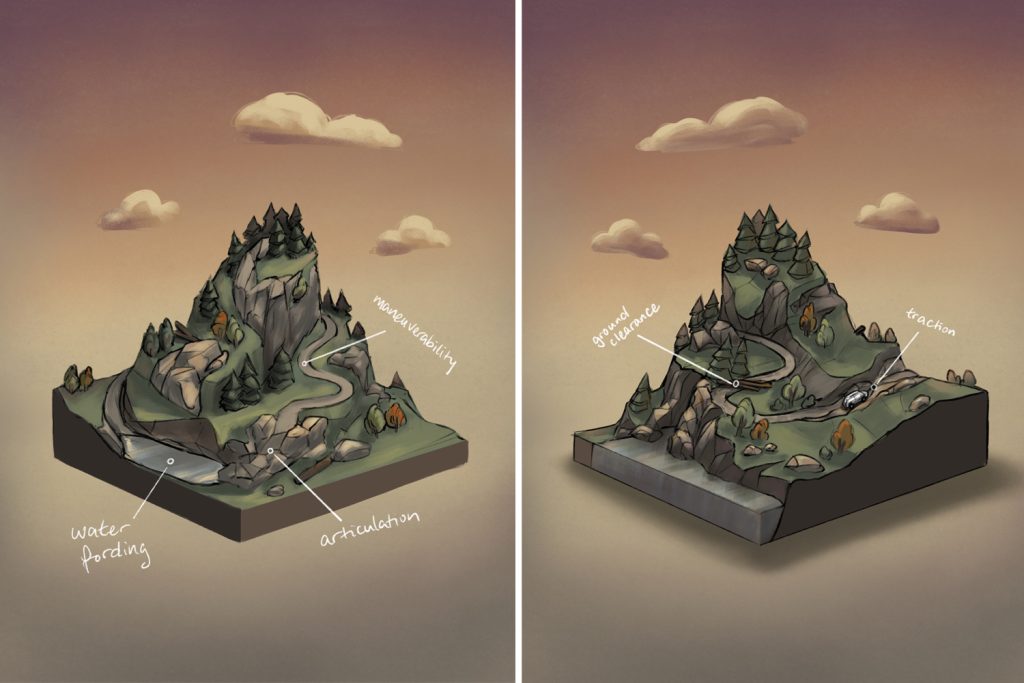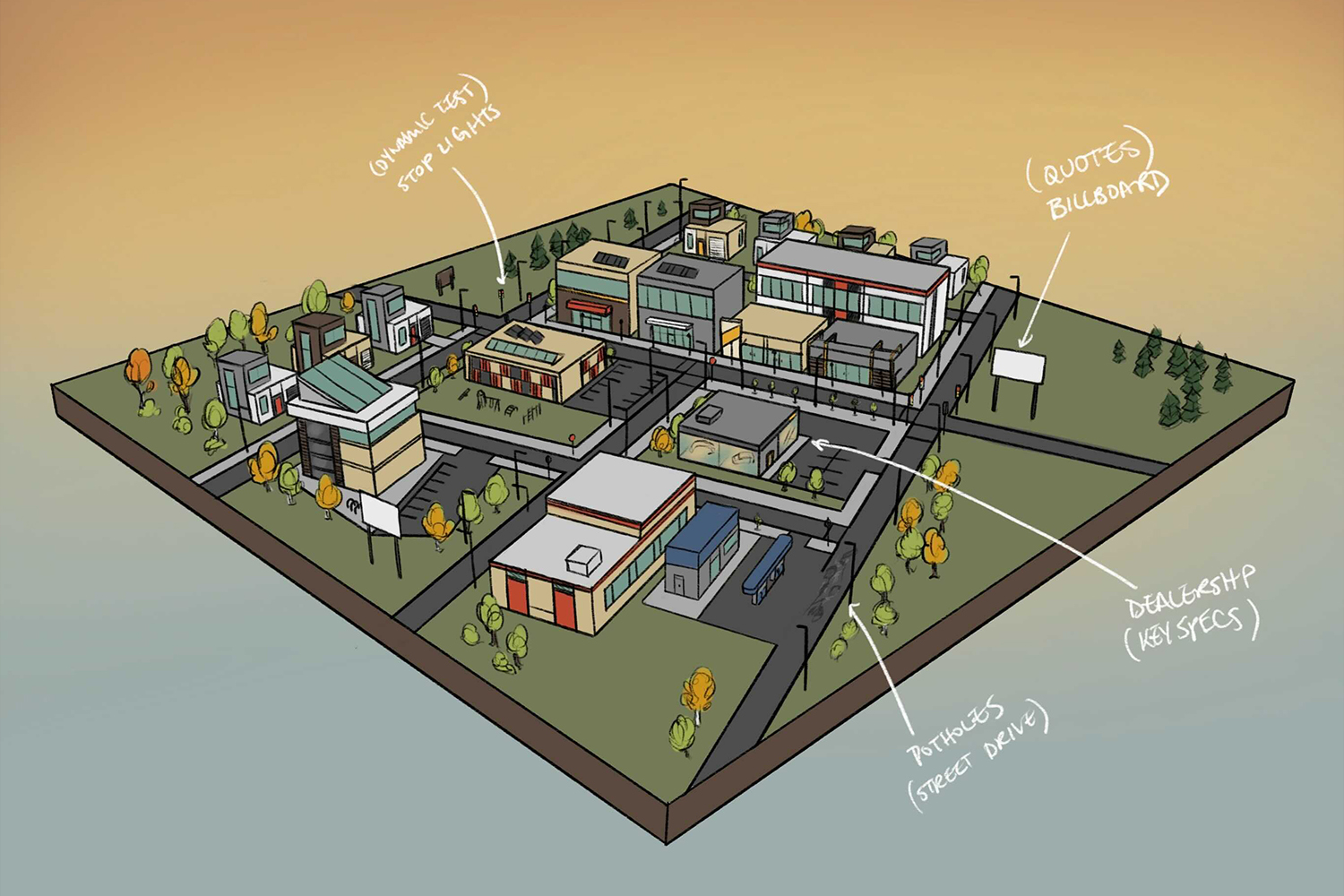WXO Case Studies tell the story of how experts across the Experience Economy have faced challenges, solved problems, and either pioneered new ideas or just figured out how to make something work really well.
We believe these experience-based ideas are highly transferable, and that you should be able to take what they discovered in their sector, and apply it in your area of the Experience Economy. If you’d like to share your own case study with the WXO community, please get in touch.
The Jeep Grand Cherokee Training Experience was an immersive web experience designed by creative experience agency Friendly Vengeance to help Jeep train its dealership employees remotely as their first launch in the COVID era.
In 2020, Jeep largely stopped training dealership employees on new vehicles. But as the pandemic entered its second year, they needed a way to restart training despite logistical challenges. A late winter surge dashed hopes of a planned tour and forced the corporate training event to go entirely virtual. Friendly Vengeance co-created the Jeep Grand Cherokee Training Experience as an immersive web experience to train employees remotely in a memorable way.

The immersive website featured vignettes of the new vehicle model in different environments, each telling a story of how the car excels in that scene – for example, one vignette showed the Jeep Cherokee traversing a variety of natural terrain, going up steep inclines, and fording flooded areas of the road.
Even before the pandemic, Jeep employees wouldn’t have had the ability to actually see the Grand Cherokee in a remote mountain location. Now, they could get a sense of what the vehicle would do while interacting with the scene.
They could move around the space much like a video game, which made the site more engaging. Additionally, Jeep retained the inherent educational value of the training experience. Relevant facts about the vehicle were accessible through hotspots in the virtual environment and supplemental materials could be downloaded for study.
WXO members Steve Tiseo and Amy Hua explain how they created an engaging, immersive experience that remained educational at heart.
Who’s our Hero?
We believe stories Start With Who – so who’s the hero of this one?
This case study involves us as the creative tech team and our partner agency ES3 on content, planning, and logistics. Together, we worked to create an engaging experience for Jeep dealership employees that they could safely explore from home or wherever they were.
What did the Old World look like?
How were things going? What was good or bad?
Even pre-Covid the automotive (and likely most corporate) training experience was feeling pretty stale. It typically consisted of long days of a facilitator or facilitators walking through Powerpoint after Powerpoint with a couple of coffee breaks and a lunch.
The education was mostly passive and eyes would gradually glaze over during the presentations. The events often had some portion of a professional driver-led learning experience on a prepared course set up in a parking lot meant to simulate particular driving situations.
Many automotive companies were slow to adopt technology in the learning arena and lag behind their marketing counterparts when it comes to launching a new product.
What was the Call to Adventure?
What was the problem, either “out there” – in society, the industry, the world – or “in here” – the firm, the community?
Throughout the pandemic, it seemed that many in this sector were struggling to decide between the risks of in-person events and stepping into the unfamiliar with online tools they’d never used. Do they invest heavily in safety protocols for an IRL experience, with little contingency if things go wrong? Or do they invest in a more robust virtual solution?
Without knowing how long it would be until people could safely gather in groups, many were hesitant to spend a lot on virtual solutions that were seen as temporary and opted for a more barebones approach of webcasts while awaiting the greenlight for a return to IRL experiences.
What was the Inciting Incident?
What changed?
The effect the pandemic had on the vehicle launch and subsequent training was enormous. Obviously, without the ability to safely gather in person in large groups, ES3 was looking for ways to host outdoor, socially distanced and masked events complete with COVID testing. Ultimately, launching an outdoor tour in the midwest United States in March was always wishful thinking. A COVID surge and cold weather that would require converting the venues to indoor gatherings forced the pivot to an entirely virtual training experience.
What would have happened if you hadn’t Crossed the Threshold?
…or done what you’d always done before?
If Jeep and ES3 hadn’t been willing to take a chance on a different way of conducting training, they would likely have fallen back on Zoom meetings, slide presentations, and flash card apps. There isn’t anything inherently wrong with any of these approaches, but as with all experiences, investing in memorable moments pays dividends in retention. Would any Jeep employee be excitedly sharing their experience of a slide presentation?
What Trials did you face?
Lack of knowledge? Time? Money? Contacts?
We try to push ourselves with every project we undertake, so there were some areas where we tried to stretch the kinds of animations, effects, and technical solutions we applied. There were also the usual challenges of coordinating stakeholders, content, and timelines. However, the greatest challenge was faced at the beginning of the project when we needed all stakeholders to be willing to take a chance on a new idea. Once we were all on the same page, everything moved along.
Who were your Allies?
Who was on your side or helped you achieve your goal?
Our colleagues at ES3 were amazing allies and championed us as we came to the Jeep brand with an approach that was unlike anything they’ve done before. The look and feel of a low poly, webGL experience was something that needed brand buy-in and did not look like any of the experiences that ES3 had pitched in the past.
When we suggested this game-like approach to a virtual learning environment, they backed our creative all the way.
What was the biggest Ordeal?
What was the toughest challenge you faced?
The sheer uncertainty of the pandemic was the source of new hurdles every other day, it seemed – not only in the IRL / virtual whiplash, but also with supply chain issues.
While trying to gather content, our colleagues could not get access to the vehicles due to chip shortages. So many of these dealers had Jeeps sitting at regional facilities that were not driveable. One tiny silver lining is that it gave us some time experiment a little more with the creative and tech and served up as some R&D for future projects.
How does the New World look now?
Now you’ve faced this challenge, what does it mean for you, your organization, and the world?
We didn’t change the world, but we’ve made a case for the value of experiences – and immersive web specifically – as a viable training solution. For something that has a distinctly “metaverse-y” feel, this project has opened a window into other practical applications for virtual world building and it’s something we hope to bring to other clients in the near future.
What might the next Journey be?
Thinking ahead, what might the challenges ahead look like?
Virtual spaces are becoming more ubiquitous for socialising among certain demographics, but it remains a hard sell for some. We will likely continue to face some scepticism around how useful it is to create a digital space for sales and educational experiences in corporate environments. However, there is plenty of evidence that novelty and interactivity increase a person’s enjoyment and memory of an experience, so that’s an argument for the inherent value of immersive web training versus boring slide decks!
There are other ways we could take this concept a step farther. It may be challenging to find a brand ready to take the plunge, but if they are, we could tie in other XR tech including virtual reality components or more ambitious augmented reality activations. So much of that tech is ready to go: it just needs a market ready to harness extended reality storytelling.
For more case studies and learning frameworks from the Experience Economy, check our Case Studies page here.





